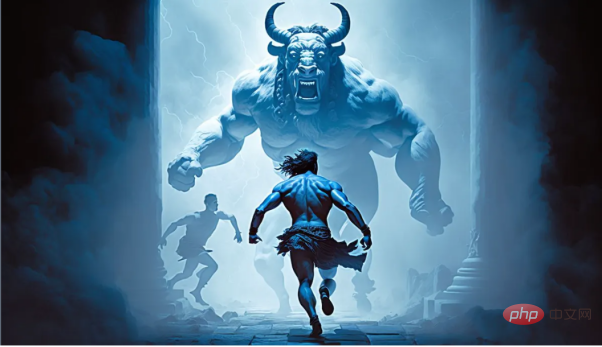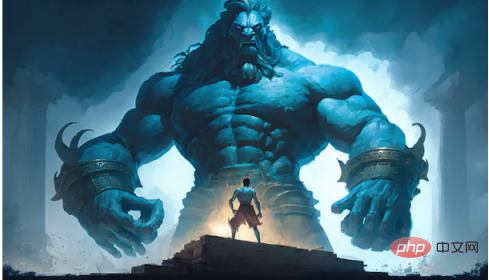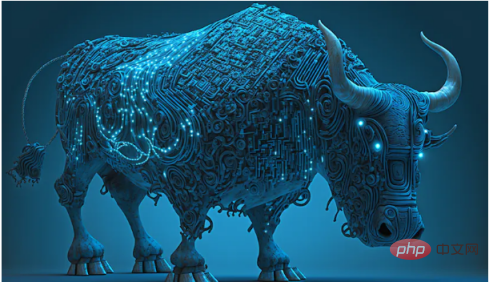
Translator | Chen Jun
Revised | Chonglou

##2014 When Satya Nadella took over as CEO of Microsoft in , he faced a company that was stagnant and struggling to compete in a rapidly evolving technology landscape. Advantage company. Since then, Nadella has been credited with revitalizing Microsoft by shifting its focus from traditional operating systems and productivity software to cloud computing and artificial intelligence. Let us take the Office
productivity suite as an example to see what it did before and after Nadella took office evolution. This software was first launched in 1989, initially including Word, Excel and PowerPoint, and later included Outlook, Access and After Publisher, has become the cornerstone of productivity and communication in the business world. In 2011, Microsoft launched
Office 365, which is the company's A major shift in business strategy. It solidified Microsoft's dominance in the market by transitioning to a cloud-based subscription model, while also creating a strong customer lock-in effect. That said, the subscription model ensures a steady revenue stream for Microsoft and encourages users to stay in its ecosystem. After all, it would cost them to switch to an alternative solution, which would become more cumbersome. Of course, Microsoft's ambitions go far beyond Office 365 and Azure cloud computing. Minotaur and Microsoft##In Greek mythology, the Minotaur
is a half-human, half-ox creature. Although it was extremely powerful and ferocious, it was ultimately defeated by the Athenian hero Theseus by exploiting its fatal weakness of being "unable to navigate the labyrinth." 
So, is there a connection between this powerful Greek mythological creature and modern Microsoft? In fact, The reason why the Minotaur is so powerful is mainly because it is a hybrid creature that is half human and half bull. Compared with Microsoft, we can think of: Half Human: Obtained through the exclusive license of OpenAI Human Language and Wisdom
Through strategic investment and exclusive licensing cooperation with OpenAI, the inventor of ChatGPT, Microsoft has consolidated its presence in dominance in the field of artificial intelligence. The partnership, officially announced in 2019, will allow Microsoft to leverage OpenAI's cutting-edge research and newly developed AI technology, and drive and integrate it into services including Azure AI, Cortana, and Office 365 and other own products and services have promoted the development of MicrosoftAI ecosystem. It is worth mentioning that the scope and speed of OpenAI’s integration into Office 365 have, to a certain extent, allowed Microsoft to quickly capture all human language, knowledge, and Inferential Intelligence (Microsoft researchers call this “a spark of AGI”) .
You may say: Google and Meta have already started the challenge OpenAI plus Microsoft combination has a monopoly position. However, at present, it seems that their large language models--Bard and LLaMA still seem to be "one position" behind OpenAI. In addition, as OpenAI has grown from a non-profit organization to a limited profit organization. Microsoft has planned to inject more than $100 into OpenAI. It can be seen that the symbiotic relationship between OpenAI and Microsoft will continue.

2018# In ##, Microsoft acquired and integrated the leading software development and collaboration platform --GitHub, further expanding its control over the entire human intelligence. GitHub is the hub for all leading open source projects. You can think of it as an aggregated repository of human intelligence expressed in computer language.
And OpenAI#Codex is a A high-level language model that has a profound impact on the field of software development through integration with GitHub Co-Pilot. Codex is part of the GPT-3 family of models capable of understanding and generating human-like text, as well as programming code. Specifically, it is able to interpret natural language, query and generate accurate and contextually relevant code snippets. These capabilities make it a valuable tool for developers.
GitHub's Co-Pilot uses the ability of Codex to play the role of AI The driven coding assistant role helps developers write program code more efficiently by providing real-time suggestions and automatically completed code snippets. Thus, the integration of Co-Pilot with Codex minimizes errors and allows developers to focus on higher-level design and problem-solving tasks.
As a Product Manager and Co-Founder, I help you by integrating GitHub Co-Pilot is used in conjunction with ChatGPT v4 to write a concise requirement and then let ChatGPT output high quality template file. Then, in Visual Studio Code with GitHub Co-Pilot, I modified the functions and parameters as needed, fine-tuning various Control flow and business logic. A working prototype was created in a matter of hours. It is said that For those experienced software engineers, through GitHub Co-Pilot and ChatGPT v4 With the combination of , their productivity can be increased by 3 to 10 times.
Through GitHub’s huge repository, tools like this make it easy to find design patterns and apply them to It is embedded in an environment that is appropriate for the software system that the developer is currently using. Accordingly, the entire development process not only saves a lot of search time and input and error checking, but also automates a large amount of documentation and testing processes. No wonder some engineers lamented: When GitHub Co-Pilot was offline for a few hours, it was like he had lost an arm.
Google has always claimed that its mission is to "organize the world's information and make it universally accessible and Benefited from". Its practice is to realize its vision by performing basic page ranking (PageRank) on various websites, and building a huge index for them.
However, with Microsoft and OpenAIGPTBig language model, and GitHub Codex, the world’s information may be condensed into billions or even tens of thousands The weight of billions (figuratively speaking, it should be a number of statistical importance). It is Microsoft's deep-rooted relationship with OpenAI## that has raised concerns about the possibility of the company using its integration capabilities to monopolize creativity in the field of artificial intelligence. Microsoft seems to have entered its "Minotaur moment."
It is undeniable that OpenAI’s GPT-4 language model is one of the most powerful artificial intelligence systems in the world today. And GitHub is the world's largest code hosting platform. Just imagine, if Microsoft uses such tools to stifle competition, it may have a major impact on the development of artificial intelligence and even the entire technology industry. Of course, this is just a hypothetical concern, and there is currently no evidence that Microsoft intends to use its integration capabilities in a monopolistic manner.

If we think of startups as challenging the Minotaur of Theseus. So how can they stand on the shoulders of giants and use the platforms of large companies, as well as the resources, infrastructure and user groups provided by these platforms, to innovate on their own new products? The following are two typical success stories:
It can be seen that with the platform of a large company, various resources and user groups are no longer a luxury, and start-up companies can compete in the market Opportunities for rapid success in competition. However, one of the main risks of building services on a third-party for-profit platform is that the platform may change, die, or even compete with its own ecosystem partners (for example: Facebook and Zynga). Of course, governments and regulatory agencies may also take action to prevent various malicious competition and monopolistic behaviors.
Open source has always been a reliable weapon against large closed source systems. Whereas OpenAI has already conducted a Instead of being closed source, Meta open sourced its own large language model named LLaMA. As the most advanced open source large language model to date, it has trained as many as 650# based on 1.4 trillion words. ## Billion weights. Among them, 7, 13 and 330 billion weight models also gotMeta's open source. These smaller large language models can facilitate various research teams to propose their own fine-tuned models based on LLaMA. There are many here: Alpaca from Stanford University, Vicuna and Koala from Berkeley University, and GPT4All and other typical use cases. By using human-feedback reinforcement learning, these studies claim they have achieved commercial ChatGPT 3.5 (1750 billion weight)90% to 95% performance, while the weight is only 70 billion or 130 billion. When you have these smaller big language models and optimized C implementations, you can Run them locally on your laptop, such as
calling.cpp smart assistant without having to rely on cloud services, And there is no cost. Of course, currently LLaMA models are only for research, so you cannot use them for commercial purposes. At the same time, you can also pay attention to the following practical new models: Let’s go back to the maze. According to my opinion, Office 365 is probably Microsoft's own maze. Why do you say that? From a revenue and profit perspective, Office 365 accounted for #23% of Microsoft's 2022 total annual revenue (Sourcehttps://www.php.cn/link/1b62ff22e70a7197fa1f3f34fa2b7f65.). Microsoft may be able to add new features from OpenAI to Office 365, but it will likely be an incremental update rather than a fundamental Sexual changes. After all, Office 365's typical customer base is enterprise customers who tend to be risk-averse and slow to change. They are unwilling to accept disruptive innovations to existing products. So to a certain extent, Office 365 has become a yoke to Microsoft. In this regard, young entrepreneurs can find new ways to build new communication methods that go beyond existing tools. For example: Slack and Notion will override email, Figma will override email Instead of the traditional Adobe creative suite. We can imagine how to make the updated human-machine interface work in a business environment. For example: Elon Musk’s Neuralink uses electrical connections between humans and machines, aiming to establish a direct connection between the human brain and the machine. Communication opens up exciting possibilities for reimagining communication in business environments. The following are several typical technologies and implementation methods that may surpass traditional tools such as MicrosoftOffice suites: still has a long way to go in development and implementation, Their potential to transform communications in business settings is undeniable. It can be said that by enabling a more direct, efficient, and empathetic form of communication, brain-computer interfaces will revolutionize the way we collaborate, make decisions, and share knowledge in the workplace. The future is promising and GitHub I am extremely excited and happy about the new productivity improvements brought about by the combination, but I am also worried that one company may have too much control over the collective wisdom of the entire human race. I hope that the young Theseus can pick up the sword of open source and open up new paths outside the labyrinth, allowing human wisdom to flourish more freely. Translator Introduction Original title: Microsoft's Minotaur Moment, Author: Bruce Li
Thinking Outside the Maze
Neuralink
The above is the detailed content of Microsoft's 'Minotaur Moment”. For more information, please follow other related articles on the PHP Chinese website!
 Application of artificial intelligence in life
Application of artificial intelligence in life
 What is the basic concept of artificial intelligence
What is the basic concept of artificial intelligence
 Solution to failed connection between wsus and Microsoft server
Solution to failed connection between wsus and Microsoft server
 Common uses of set
Common uses of set
 Computer 404 error page
Computer 404 error page
 There are several output and input functions in C language
There are several output and input functions in C language
 How to set both ends to be aligned in css
How to set both ends to be aligned in css
 windows ultimate
windows ultimate
 Usage of typedef in c language
Usage of typedef in c language




